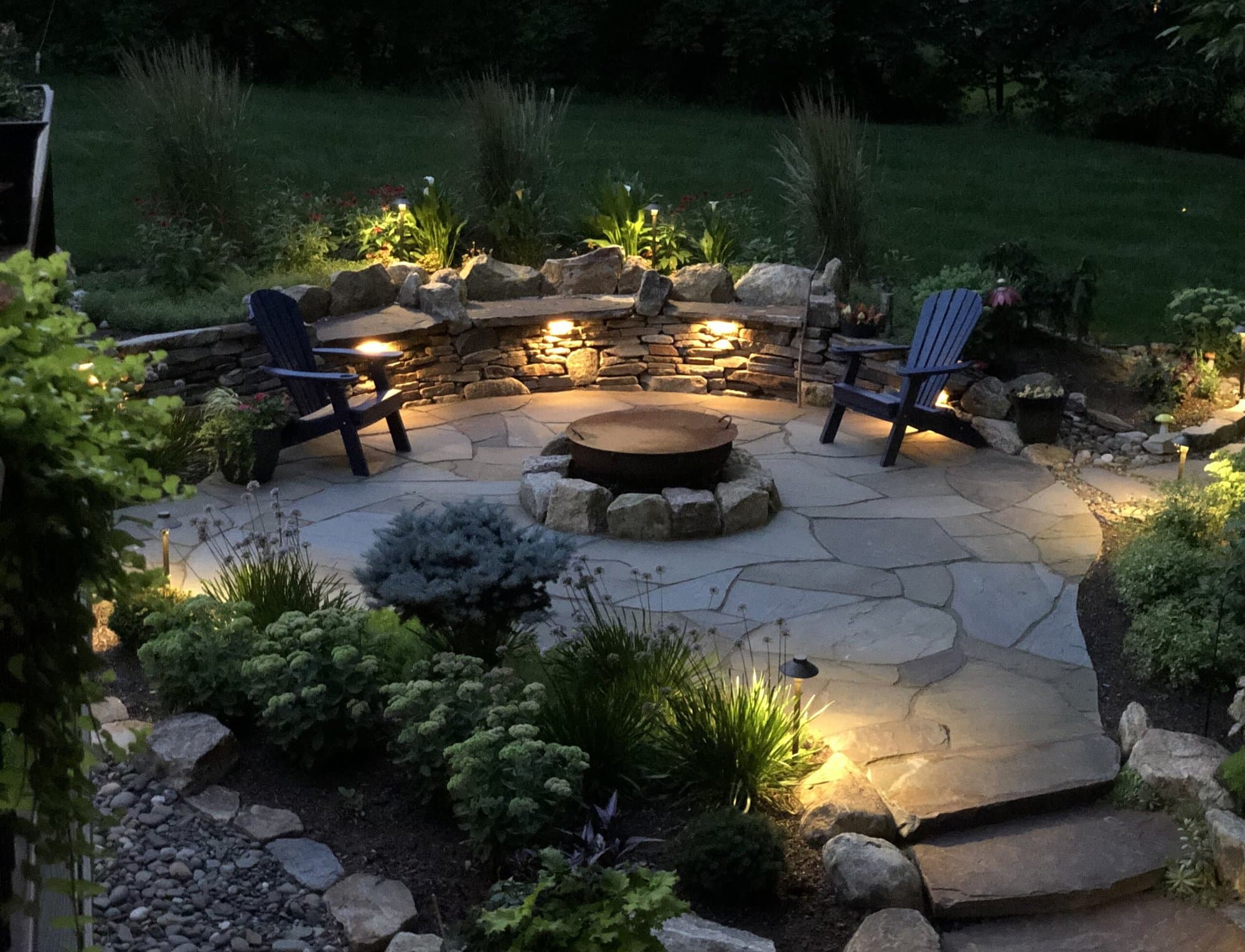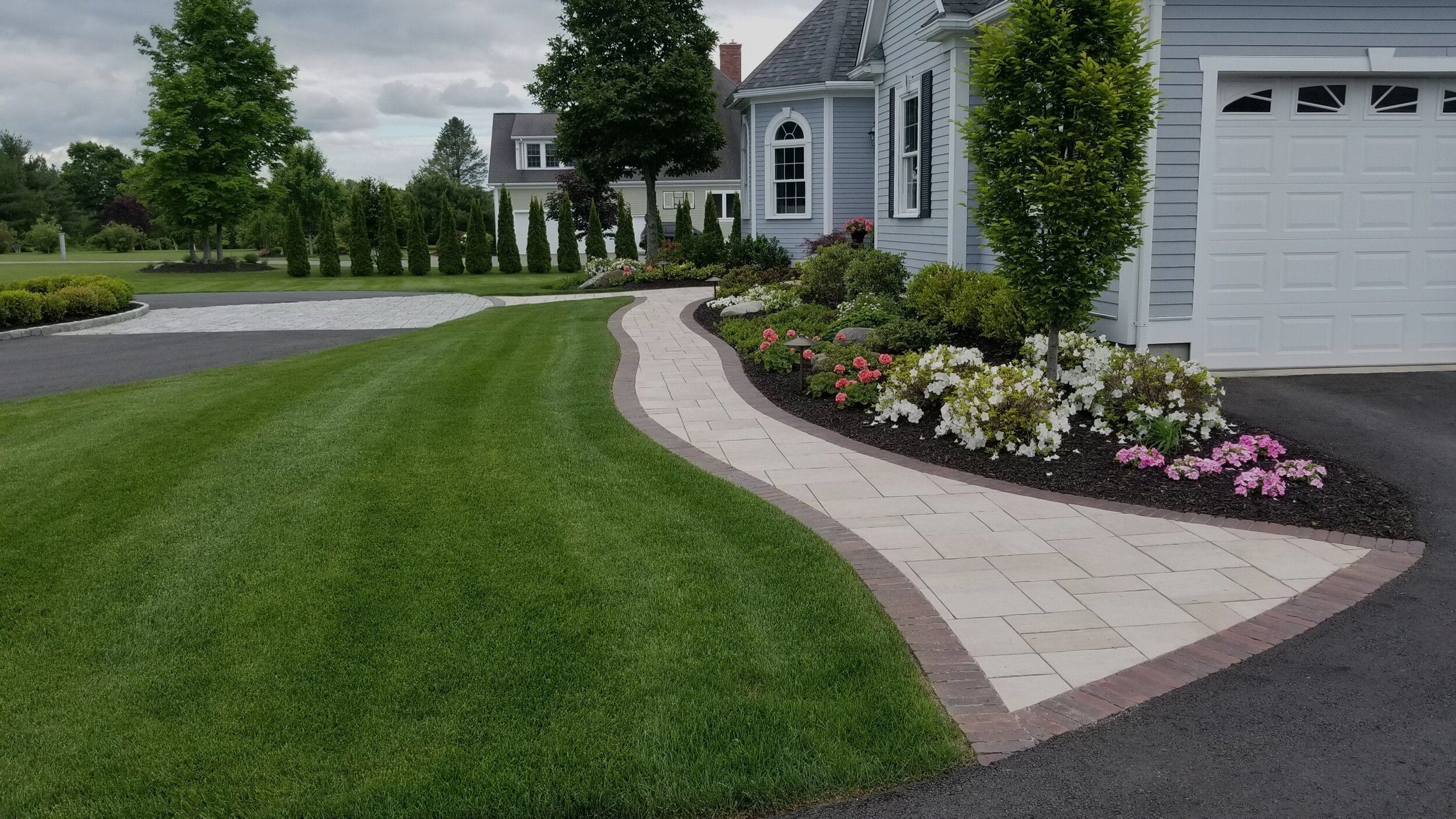A Comprehensive Overview to Designing and Implementing Effective Landscaping Solutions
The art and science of landscaping expand past plain aesthetics; they entail a thoughtful integration of design principles, environmental stewardship, and functional execution. A thorough guide to effective landscape design options begins with an in-depth understanding of your outdoor space, highlighting the value of balance, percentage, and unity. As we discover sustainable techniques and the option of suitable vegetation, the implications for biodiversity and area wellness become significantly obvious. What approaches can one employ to make sure these landscapes not only grow but also grow in harmony with their surroundings?

Comprehending Landscape Design Concepts
One might question what fundamental aspects add to effective landscape layout. At its core, effective landscape design depends upon numerous vital principles that guide the plan and choice of components within a room. These principles consist of unity, percentage, equilibrium, and rhythm, each serving to create a harmonious exterior atmosphere.
Unity refers to the natural relationship amongst various components, making sure that they interact aesthetically and functionally. Balance can be attained with balanced or asymmetrical setups, permitting the landscape to feel steady and inviting. Percentage involves comprehending the range of elements in regard to each other and the surrounding atmosphere, advertising visual harmony and comfort.

Evaluating Your Outdoor Space
Prior to executing the concepts of landscape layout, a comprehensive evaluation of your exterior room is important. This first assessment aids specify the range of your landscaping project and guarantees that your style straightens with the one-of-a-kind characteristics of your residential property. Begin by analyzing the dimensions of your space, taking precise measurements to recognize the available location for different aspects such as paths, outdoor patios, and gardens.
Next, observe the existing attributes of your landscape, including topography, dirt quality, and water drainage patterns. These elements dramatically affect plant option and positioning. Furthermore, evaluate the sunlight direct exposure throughout various areas throughout the day, as this will certainly impact the kinds of plants that prosper in your yard.
Think about the microclimates developed by structures, trees, and other obstacles, as they can affect temperature level and moisture levels. Last but not least, keep in mind of any existing plants or hardscape elements that you want to remove or keep. This detailed examination lays the foundation for a well-informed and efficient landscaping service, making sure that your design is not only cosmetically pleasing however likewise functional and lasting for many years ahead.
Lasting Landscape Design Strategies
These methods not only advertise eco-friendly balance but likewise boost the useful and visual value of a landscape. Executing effective watering systems, such as drip watering, decreases water waste and ensures that plants receive appropriate moisture (Palm Desert Landscaping).

An additional effective strategy index is the strategic placement of trees and bushes to give all-natural windbreaks and shade, therefore reducing energy prices (Palm Desert Landscaping). Rain gardens can be integrated into the landscape design to handle stormwater overflow successfully, filtering toxins before they get in rivers
Choosing the Right Plants
Picking the right plants for your landscape is vital to achieving both aesthetic charm and eco-friendly consistency. The procedure begins with an understanding of your neighborhood environment, dirt conditions, and the particular microenvironments within your landscape. Examining factors browse around this web-site such as sunshine direct exposure, moisture levels, and existing flora will aid you select plants that flourish in your unique setting.
Take into consideration incorporating indigenous plants, as they are well-adapted to regional conditions, need much less maintenance, and support local wild animals. Additionally, selecting a varied variety of varieties can enhance biodiversity while minimizing the risk of illness and insect break outs. It is vital to examine the growth routines, growing periods, and seasonal colors of possible plants to create a cohesive and dynamic landscape.
Furthermore, believe concerning the intended usage of the room; for example, if the location will certainly experience high foot traffic, go with durable ground covers. By thoughtfully choosing plants that align with both your ecological demands and aesthetic goals, you can create a sustainable landscape that not only boosts your home but additionally contributes positively to the surrounding environment.

Execution and Maintenance Approaches
Once the right plants have actually been picked for your landscape, the emphasis changes to efficient execution and ongoing upkeep methods. Successful setup begins with proper site preparation, which includes dirt screening to identify nutrient levels and pH, followed by changing the dirt as required. Meticulously set up plants according to view it now their growth practices and light needs, guaranteeing sufficient spacing to promote healthy and balanced development.
Irrigation is an important element of execution. Develop a watering schedule that considers the particular needs of each plant types, changing for seasonal changes. Utilizing drip watering systems can improve water effectiveness and minimize overflow.
Maintenance approaches should be carried out to make sure the durability and vitality of your landscape. Regular tasks consist of weeding, mulching, and trimming to control growth and prevent condition. Fertilizing must be carried out based on dirt examinations, offering the required nutrients without over-fertilizing.
Monitoring for parasites and illness is crucial; early discovery can stop considerable damage. Last but not least, seasonal modifications to maintenance regimens, such as preparing and winterizing perennials for springtime development, will certainly make sure that your landscape remains aesthetically attractive and healthy year-round.
Verdict
Successful execution and recurring maintenance additionally make certain the long life and vitality of landscapes. By integrating these components, landscapes can be changed right into gorgeous, practical atmospheres that advertise biodiversity and contribute positively to community health.
One may question what foundational components contribute to reliable landscape layout. At its core, effective landscape design hinges on several key principles that assist the plan and choice of aspects within an area.Choosing the right plants for your landscape is essential to attaining both visual allure and ecological consistency. It is essential to examine the development behaviors, flowering durations, and seasonal shades of prospective plants to develop a vibrant and cohesive landscape.
When the appropriate plants have been picked for your landscape, the emphasis moves to efficient implementation and ongoing upkeep approaches.